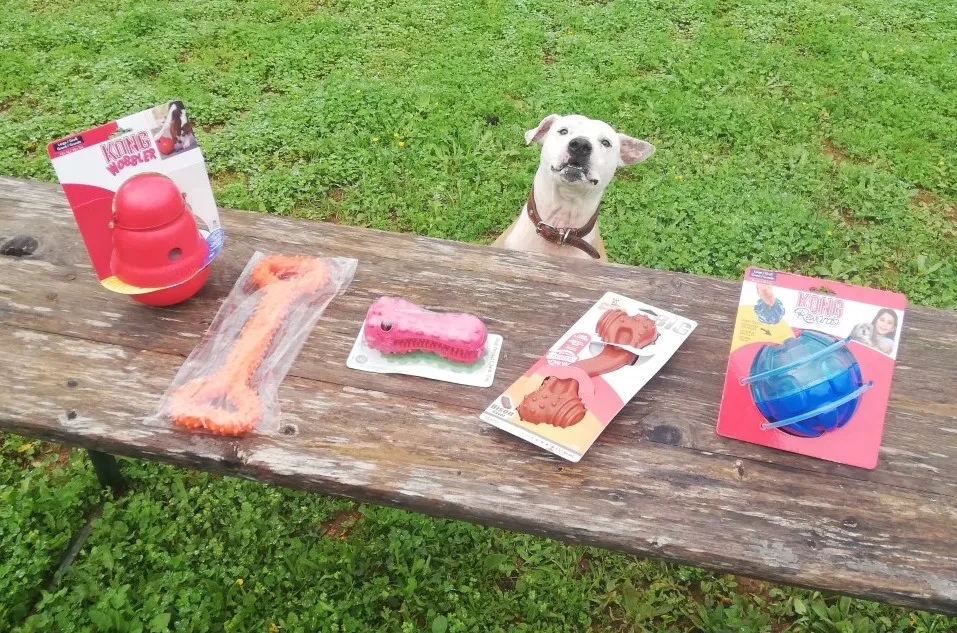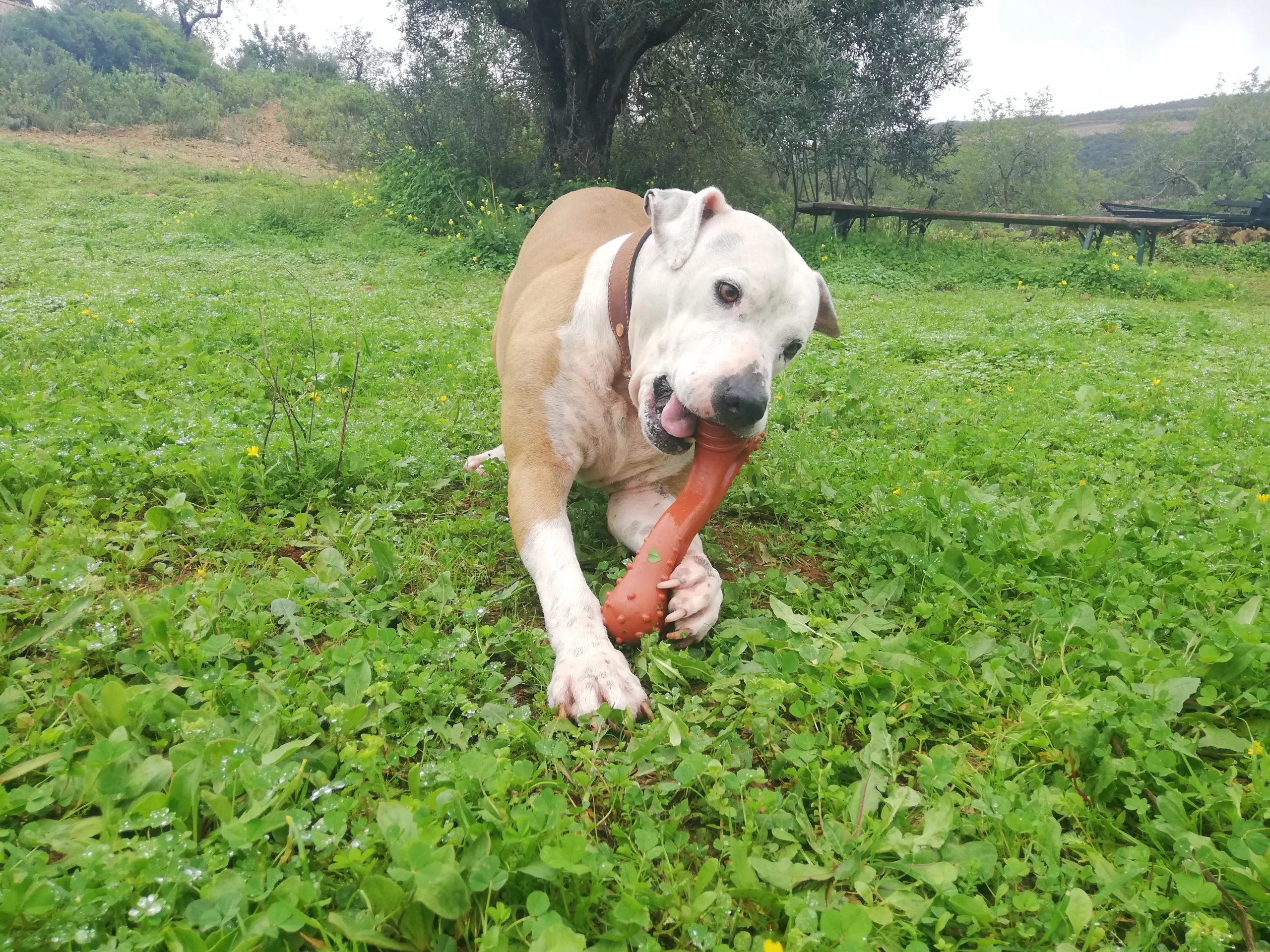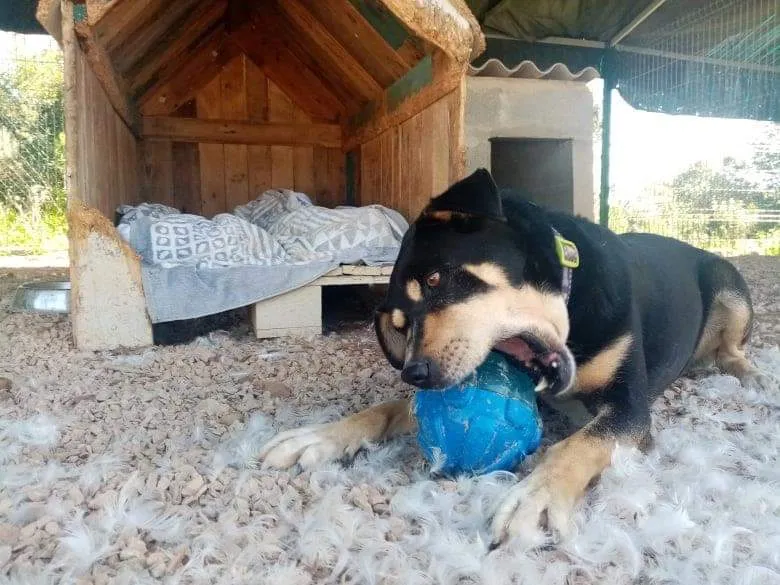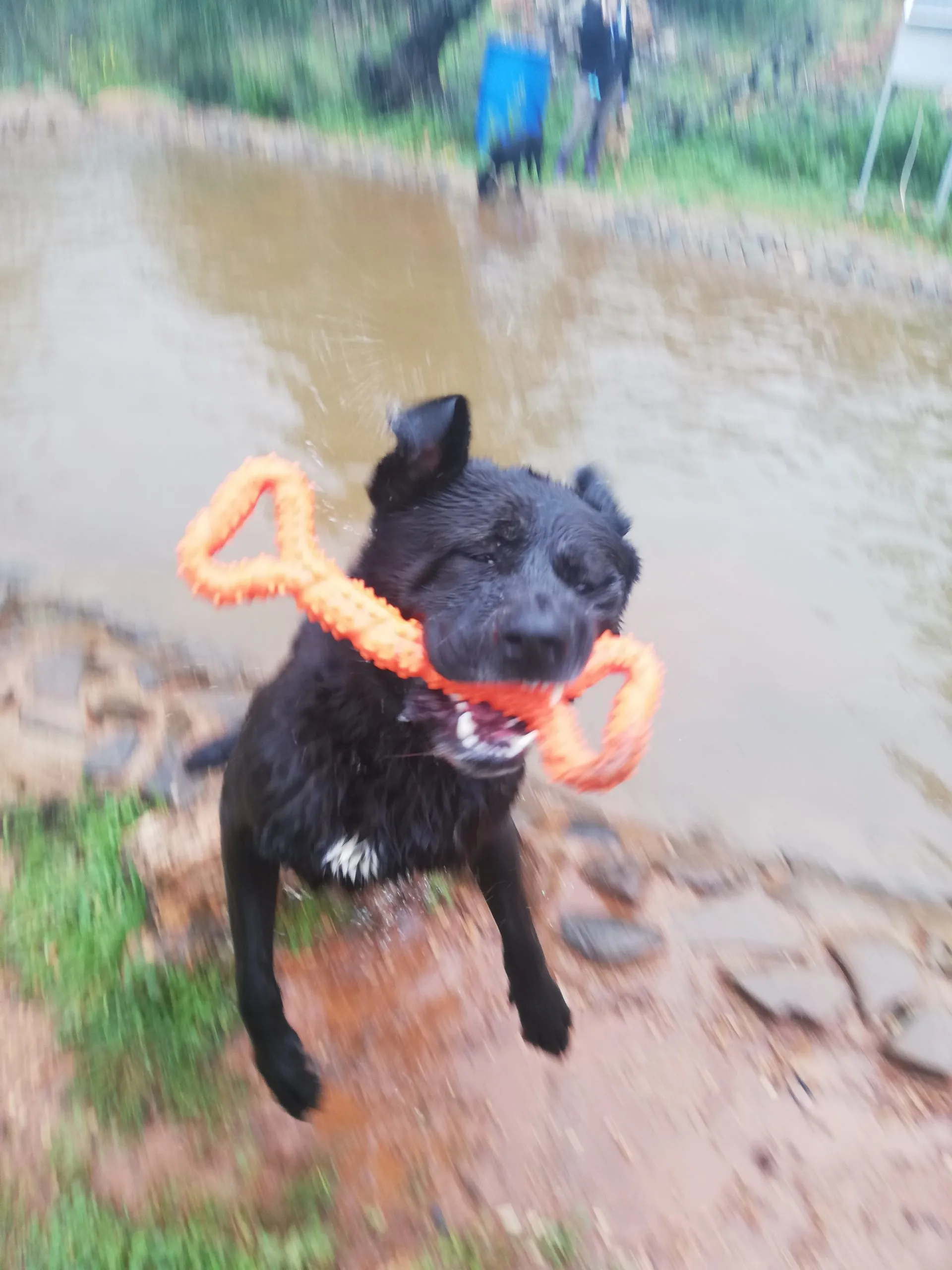Every dog owner knows the struggle: you buy a new dog toy, full of hope that this will be the one that withstands your canine’s powerful jaws for more than an hour, a day, or even a week. But too often, before you can fully appreciate your dog’s happy face with their new treasure, you spot the first tell-tale signs of destruction. A rip here, a chunk missing there, and another “indestructible” toy bites the dust. This cycle of hopeful purchase and swift destruction is all too familiar for those with aggressive chewers. If you’re tired of toys that don’t last, you’re in the right place to discover truly durable options.
As dog owners ourselves and caretakers of a large dog family at Benafim Dog Shelter, we have put countless toys to the test. While we orchestrate the reviews, it’s our resident experts—the dogs—who truly provide the reliable, honest, and trustworthy feedback. They know a thing or two about toys and aren’t afraid to put them through their paces! We recently challenged five popular “indestructible” dog toys with a panel of our most vigorous chewers, including Nero, Max, Maya, Black Nero, Jean, and Pebbles. The goal was simple: find the Best Heavy Duty Dog Chew Toys that truly live up to their claims. For more fantastic options, explore our collection of extra tough chew toys for dogs.
These five contenders—the Nylabone Extreme Tough Dog Chew Toy, the Kong Rewards Ball, the CyunCmay Indestructible Dog Toy Bone, the Hetoo Indestructible Squeaky Dental Care Dog Toy, and the Kong Wobbler—endured a week of intense chewing, playful bouncing, excited staring, swimming, burying, and re-discovery. Here’s what our expert dog testers had to say about their durability and overall fun factor.
Real, Honest, and Reliable Reviews From Our Expert Testers: The Benafim Shelter Dogs
Our canine reviewers at Benafim Dog Shelter meticulously evaluated each toy, offering unbiased opinions on their strength, engagement, and whether they truly belong on the list of best heavy duty dog chew toys. We’ve compiled their collective wisdom to help you make an informed choice for your powerful chewer.
 A group of shelter dogs eagerly awaiting to test a selection of heavy duty chew toys
A group of shelter dogs eagerly awaiting to test a selection of heavy duty chew toys
Nylabone Extreme Tough Dog Chew Toy
The Nylabone Extreme Tough Dog Chew Toy, specifically the XXL Bison flavored bone, is marketed as the perfect solution for the most powerful chewers and dogs weighing over 23 kg. Our nine-year-old Pit Bull, Nero, a dog we suspect is smarter than most of our human team combined, spent hours gnawing on this toy, leaving barely a mark. Despite its large size, it’s surprisingly lightweight, making it easy for dogs to carry around. Its subtly curved design also allows for an easy grip with paws, enhancing the chewing experience and satisfaction.
Maya, a three-year-old dog who was abandoned and terrified of humans, had likely never experienced toys before. Yet, she immediately took to the Nylabone, showing no confusion. She thoroughly enjoyed chewing it and running around, often encouraging Max and others to chase her. This toy is also remarkably easy to clean, and its flavor is integrated throughout, meaning it never fades. A significant bonus for dog owners who prioritize cleanliness is that this bone produces no mess or unpleasant odors, a truly appealing feature for any household.
 Nero, a handsome white Pit Bull, intently chewing on the large Nylabone Extreme Tough Dog Chew Toy
Nero, a handsome white Pit Bull, intently chewing on the large Nylabone Extreme Tough Dog Chew Toy
Black Nero, a Cane Corso cross, is infamous for his powerful chewing habits, capable of shredding large tree trunks as if they were nothing. When anxious, he has even managed to bend strong fencing material. Impressively, this Nylabone proved to be “Black Nero proof.” He absolutely loved it, and even after extensive chewing sessions, the bone showed hardly a tooth mark. The Nylabone Extreme Tough Dog Chew Toy comes in bison, chicken, and turkey flavors, all designed to encourage chewing. Its raised nubs contribute to cleaning teeth and gums, making it a functional choice for dental health. Made from safe, non-toxic materials, this toy measures 30.48 x 13.97 x 5.08 cm and weighs 485 grams, specifically designed for dogs weighing over 23 kg. All our shelter dogs wholeheartedly recommend this Nylabone. If your dog loves to chew, gets bored easily, and needs a durable, flavorful toy, this is an excellent choice.
Kong Rewards Ball
The Kong Rewards Ball initially received a somewhat less enthusiastic reception from our dog reviewers compared to other toys. However, this reaction was fleeting. The clever combination of a durable toy and a treat dispenser quickly won them over, offering hours of amusement. For us humans, loading treats was remarkably simple. Unlike some other treat-dispensing toys, this one didn’t require excessive mental effort from the dogs to extract their rewards, making it highly accessible and rewarding for them.
Interestingly, our dogs seemed to appreciate the soft, bouncy, and “squidgy” texture of the ball more than its treat-dispensing feature. Jean, in particular, absolutely adored this toy, often burying it after hours of chewing the rubbery side, only to dig it up again later. His best friend, Komo, barely got a look-in, much to his chagrin. But Jean’s positive review isn’t isolated; every single dog at the shelter, from the enormous Jambo to the petite Star, enjoyed playing and chewing with it.
 Jean, a shelter dog, happily chewing on the soft and bouncy Kong Rewards Ball
Jean, a shelter dog, happily chewing on the soft and bouncy Kong Rewards Ball
Crucially, after all their intense play, not a single tooth mark was found on the Kong Rewards Ball, and predictably, no treats were left inside. This confirms its effectiveness as both a durable toy and a straightforward treat dispenser. The Kong Rewards Ball measures 12.7 x 12.7 x 12.07 cm and weighs 417 grams, designed for dogs weighing 16 kg and above. Our dogs concluded that this is an exceptional all-around toy, perfectly blending two of their favorite activities: play and food. It’s a tough and durable option that withstands extensive chewing, bouncing, and interactive play, while also offering a simple and effective treat-dispensing mechanism.
CyunCmay Indestructible Dog Toy XL Bone
The CyunCmay Indestructible Dog Toy XL Bone generated immense excitement among our dogs upon unwrapping. Unfortunately, this enthusiasm was short-lived once Black Nero got his paws and teeth on it. While he did enjoy a solid 30 minutes of fun—playing tug-of-war with its end handles, having a good chew, and fetching it from the lake—our fears about its durability were quickly confirmed. Its soft, rubbery, and pliable material seemed unlikely to withstand extreme testing, and Black Nero, taking his testing duties very seriously, sadly proved us right.
Within just 30 minutes, the bone showed significant tooth marks and was almost split in two. This clearly contradicted its “indestructible” claim. The CyunCmay bone measures 32.9 x 12.2 x 3.8 cm and weighs 330 grams. It is made from TPR environmentally friendly material, free from chemical smells, and claims to be safe and non-toxic. Its surface is also designed to help clean dogs’ teeth and control plaque and tartar. While described as strong, durable, and suitable for medium to large dogs, our results painted a different picture.
 Black Nero, a powerful chewer, vigorously testing the bright orange CyunCmay Indestructible Dog Toy, mid-leap
Black Nero, a powerful chewer, vigorously testing the bright orange CyunCmay Indestructible Dog Toy, mid-leap
Is it indestructible? Definitely not. Was it fun for a short while? Yes. If you’re looking for a chew toy that won’t be broken in minutes, this is not the toy for your dog. However, if you’re seeking a fun toy for retrieval games where your dog isn’t left to chew it unsupervised, this toy was quite popular. Our dogs, however, were left visibly sad and disappointed when their intense fun with this toy came to an abrupt end.
HETOO Indestructible Squeaky Dental Care Dog Toy
This Hetoo toy, primarily designed for dental cleaning, received an overwhelmingly unenthusiastic response from our expert reviewers. Even its squeak failed to generate any excitement; in fact, Maya initially ran and hid from the strange noise emanating from the odd-looking red object. Being the brave girl she is, Maya eventually gave it another inspection, but her interest was minimal.
To try and make the toy more appealing, we smeared peanut butter into its grooves, hoping to encourage our dogs to chew. This strategy kept Maya engaged for only a few minutes before she wandered off, leaving the toy behind. Black Nero and Maya were the only ones who showed any interest, and even that was very short-lived. The Hetoo toy is made from natural rubber, measures 12.7 x 12.7 x 12.07 cm, and weighs 417 grams.
In summary, the Hetoo toy failed to excite or entertain our dogs for more than a few minutes. And yes, it squeaks—annoyingly so for us humans! It simply didn’t stand up to the challenge of keeping even our most powerful chewers engaged, making it a poor contender for the title of best heavy duty dog chew toys.
Kong Wobbler Interactive Treat Dispensing Dog Toy
The dogs’ initial reaction to the Kong Wobbler was priceless—a mix of confusion and curiosity, as if questioning whether it was a bird, a plane, or a UFO! This might have been partly due to its considerable size. Unlike many other Kong treat toys, this one is crafted from a harder plastic polymer rather than rubber. From a human perspective, its twist-off lid makes filling it with treats incredibly easy. Initially, our dogs struggled with it. They clearly wanted to play and understood there were treats inside, but couldn’t quite figure out how to get them out.
We soon realized that the Kong Wobbler performs best on smooth surfaces, not the pebbled stone floors of their kennels. We also learned that the treat size needed to be compatible with the dispenser hole—a simple oversight on our part. Once these human errors were corrected and the dogs understood its mechanism, the Kong Wobbler became a huge hit. Its large size makes it challenging for dogs to pick up in their mouths, which might actually be a positive feature as it reduces the chances of them getting their teeth stuck in it, potentially preventing destruction.
 Pebbles, a shelter dog, diligently interacting with the red Kong Wobbler treat dispenser on a smooth surface
Pebbles, a shelter dog, diligently interacting with the red Kong Wobbler treat dispenser on a smooth surface
The Kong Wobbler is made from a plastic polymer, measures 13 x 19 cm in diameter, and weighs 485 grams. It’s designed for dogs weighing 12 kg and above, with a maximum filling capacity of 250 grams. According to our dogs, this toy is indeed indestructible and easy to use once both humans and canines understand its proper operation. For more choices that cater to powerful jaws, check out our selection of toys for dogs that are heavy chewers.
Conclusion: Our Dog’s Verdict on the Best Heavy Duty Dog Chew Toys
After extensive testing, numerous serious-looking meetings, and a fair amount of excited barking (we won’t name the loudest!), our expert dog panel has reached their final verdict on these five “indestructible” toys. The drumroll is over, and the results are in for the best heavy duty dog chew toys.
The Nylabone Extreme Tough Dog Chew Toy emerged as the undisputed champion for powerful chewers. Its unparalleled durability, integrated flavor, and teeth-cleaning features make it a standout choice for dogs who need a truly tough and engaging toy. The Kong Rewards Ball also proved to be exceptionally durable and highly entertaining, combining vigorous play with a simple, effective treat-dispensing function. Similarly, the Kong Wobbler passed the “indestructible” test, providing excellent mental stimulation through treat dispensing, particularly effective on smooth surfaces.
Unfortunately, the CyunCmay Indestructible Dog Toy XL Bone and the HETOO Indestructible Squeaky Dental Care Dog Toy fell short of their claims. While the CyunCmay bone offered temporary fun for retrieval, it was quickly destroyed by our strong chewers. The Hetoo toy failed to capture the dogs’ interest or provide lasting entertainment.
For dog owners seeking genuine heavy-duty chew toys that will endure the toughest jaws and provide lasting engagement, we wholeheartedly recommend the Nylabone Extreme Tough Dog Chew Toy, the Kong Rewards Ball, and the Kong Wobbler. These toys truly stand out for their resilience, interactive potential, and ability to keep even the most determined chewers satisfied and entertained for extended periods. Invest in these top-tier options to save yourself the repeated disappointment of flimsy toys and give your powerful chewer the durable enrichment they deserve.
